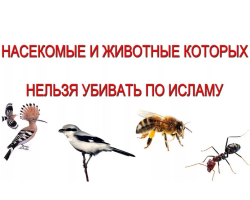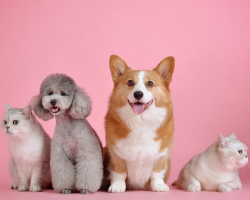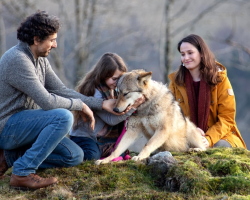To understand for what reason the snot in dogs and how to cure them, study the article and determine the symptoms of your pet.
It is believed that a runny nose in a person takes place in a week if it is treated. And if not treated, then in 7 days. This, of course, is a joke, but in fact, people really do not attach serious importance to this malaise. But is it possible to approach with the same standards to hrymort in dogs? It turns out that this symptom can signal a number of serious health problems in your pet.
Nryshore in dogs: causes
There is a whole list of reasons that can lead to discharge from a dog nose. Because the a runny nose in a dog -This is only one of the symptoms of a disease, then the dog breeder will need to look for your pet and other signs by which it will be possible to make a diagnosis.

So, a runny nose in four-legged pets may appear because of:
- Allergies to something: Due to food, chemical or toxic substances. For example, a new feeder or bee bite can lead to dog snot. As a rule, an allergic runny nose is also accompanied by tear separation, sneezing, increased itching.
- Irritation of the nasal mucosa as a result of something: Schitting traces and all kinds of smells, the animal brings its nose too close to various surfaces and earth. Together with the air, microparticles of the environment are absorbed into the nostrils, and sometimes rather large foreign objects - fragments of plants, pebbles, pieces of plastic or paper. It happens that a small insect falls into the nose. It is not too difficult to recognize this, since the animal will behave uneasily, rub with his nose on the ground and try to get rid of the interfering object in all ways available to it, for example, to scratch his paw. It happens that due to damage to the mucous membrane, a runny nose will be accompanied by bleeding.
- Inflammation of the nasal mucosa (the so-called rhinitis), which is most often, like people, due to hypothermia. If the animal caught a cold, then his appetite is sharply reduced, lethargy, difficulty breathing with a whistle or siphenia, and the discharge from the nose will be greenish, with a nasty “shower”.
- Congenital defects, which are visible immediately after the birth of puppies. Only veterinarian surgeons can fix them. Among such pathologies:
- "Cleft palate" - Incorrectly fused sky, which is formed at the embryo. In adult animals, it may appear as a result of severe injury and deformation of the sky. The main danger of the disease is that the liquid from the mouth through the nasal ducts can fall into the respiratory system, causing its inflammation, which without appropriate treatment leads to death.
- "Brachicephalic syndrome" - A soft elongated sky, with which nature “awarded” dogs with a flattened nose like Beijes. Due to the features of the structure of the muzzle in animals with such a pathology, the respiratory system functions incorrectly, causing hoarse breath and sipenia even at rest, as well as snoring and runny nose.
- Tumors in the respiratory system - They can be both benign and oncological. If the neoplasm begins to grow in the area of \u200b\u200bthe nasopharynx, then the first symptoms will be a runny nose, and also nasal bleeding, teeth loosening, anxiety of an animal that will constantly touch a painful place with his paw. If you do not get rid of the problem with the help of qualified veterinarians in time, then the dog’s muzzle will change in the future, severe pain will occur.
- Viral ailment "Adenovirosis"which leads to hepatitis. Unfortunately, the virus is extremely easily transmitted from one four -legged pet to another, and for people, fortunately, it is absolutely non -hazard. In addition to the runny nose (the discharge is very muddy, opaque), the animal begins to cough and “cry”.
- Diseases of the esophagus - “Crycophasticular Ahalasia”, which, as a rule, is diagnosed in puppies. As a result of the disease, not all food when swallowing falls into the esophagus, so the feeding process is accompanied by vomiting, cough and runny nose.
- Deadly viral disease - "Chumki", which different animals can transfer, not just dogs. It is transmitted not only from individual to individual, but also through contact objects. The first symptoms of “plague” are red eyes, reared wool, an attempt to evade direct sunlight, a sharp increase in body temperature (up to 40 degrees), a runny nose. The peak of the disease falls on the first three days after infection.

Hryminate in dogs: treatment
Depending on the reason caused a runny nose in a dog A decision is made on how to cope with it. If the cause is natural, then the animal will solve this problem independently. If the dog got sick, then either the owner himself should help her cope with the trouble or call the veterinarian to help.
- With non -infectious rhinitis - When, against the background of sneezing of the discharge from the nose, transparent, not viscous - it is enough to wait a bit so that the consequences of hypothermia are naturally.
- With infectious, purulent rhinitis - When crusts appear in the nose, and the discharge from the nose goes with the pus, you need to seek advice to the veterinarian. To alleviate the condition of the dog, lubricate the crust in the nose with three percent hydrogen peroxide. This procedure can be repeated repeatedly throughout the day, followed by lubrication of this place with vegetable oils or petroleum jelly.
- With allergies - It is necessary to identify the source of this reaction. Most often, food products can be allergen (output - not to give harmful food), fleas bites (derive parasites), external stimuli (interrupt or minimize contacts with them) or food (replace, carefully studying the composition).
- If foreign objects entered the nasopharynx - Seek the veterinarian immediately for help. It is possible that even a surgical operation is required - depending on the complexity of the case.
- When diagnosing "wolf mouth" - Definitely, only a complex operation with a long subsequent rehabilitation can help. By the way, no qualified specialist will give a 100 % guarantee of recovery - be prepared for this!
- When detecting a tumor - if the neoplasm is cancer, then the animal is prescribed either radiation (more effective, but expensive), or chemotherapy (it does not hide so much through the animal’s body, but the effect is much lower) - other effective methods of combating malignant tumors have not yet been invented.
- With "brachycephalical syndrome" - only surgery will help: plastic correction of nasal wings; transformation of the soft sky; Getting rid of the extra folds of the larynx; Removing part of the larynx. Then a long rehabilitation period will follow.
- With "adenovirosis" - The dog needs to be treated, and then still observe its condition for several months, since the virus is very tenacious. The tail patient is prescribed antibiotics, stimulants and modules of the immune system and dietary nutrition.
- With "crycoparingiaal ahalasia" - You can recover only with the help of surgical intervention. And atropine will help relieve symptoms and alleviate the condition of the animal.
- With "Chumka" “Even you just suspect her - you must definitely show the animal to the veterinarian.” Unfortunately, there were no effective therapy to combat the disease, so experts prescribe substances for a sharp strengthening of immunity. Adults can overcome the ailment on their own, puppies have much more complicated. I am glad that one day he was ill with this infection, the dog will never catch her again.







